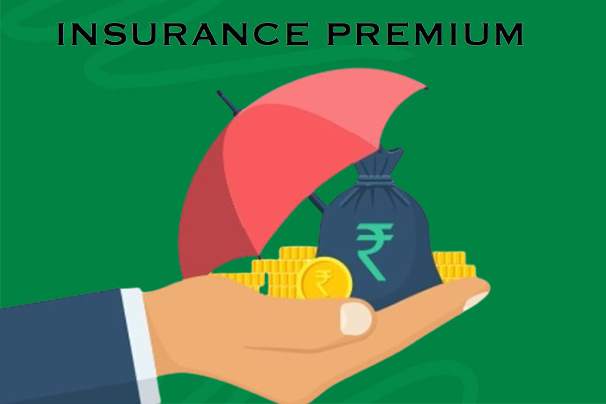What is an insurance premium? As a person who is interested in obtaining or applying for any type of insurance, you are sure to come across this term. However, it is important to understand insurance fundamentals to clear up any uncertainties. Before we begin, you need to know that insurance premiums are the financial backbone of the insurance industry.

What’s more, it is also responsible for ensuring that coverage is accessible and available to meet the needs of interested individuals. This content explains and simplifies the concept of an insurance premium, how it works, and how to calculate it.
What is an Insurance Premium?
An insurance premium is the money a person or business owner pays to obtain an insurance quote. In other words, in exchange for getting financial protection against losses from property damage, theft, health issues, or anything else mentioned in your policy, it is the price you pay for risk coverage.
In addition, insurance premiums are paid to insurance companies, which, in return, promise to cover specific financial risks outlined in the insurance policy. Depending on the policy terms, these payments can be made on various schedules, including monthly, quarterly, semi-annually, or annually.
How Does Insurance Premium Work?
The principle of risk pooling is what guides the structure of insurance. Thus, when individuals or businesses buy insurance policies and pay premiums, they pitch into a pool of funds with many other policyholders.
This pool of collected premiums is what the insurance company uses to pay out claims when policyholders incur losses covered by their policies. The insurance company also factors in its operational costs, profit margins, and the need to maintain sufficient reserves to meet future claims. This model spreads the financial burden of losses across a larger group, making it manageable for each policyholder.
What Determines an Insurance Premium?
Several factors influence the cost of an insurance premium, varying by the type of insurance. Common determinants include:
- Risk Exposure.
- Coverage Amount.
- Policyholder’s Characteristics.
- Location.
- Claims History.
- Types of Insurance Coverage.
- The policyholder’s personal information.
Risk Exposure
A higher risk of loss typically leads to higher premiums. For instance, cars with a history of more frequent or costly claims may have higher insurance costs.
Coverage Amount
Policies with higher coverage limits or lower deductibles (the amount you pay out of pocket before insurance kicks in) generally come with higher premiums.
Policyholder’s Characteristics
Depending on the insurance type, the age, gender, health, credit history, and even occupation of the policyholder can affect premium costs.
Location
Geographic factors can influence premiums, such as areas prone to natural disasters having higher property insurance rates.
Claims History
Individuals or businesses with a history of filing more claims may face higher premiums due to perceived risk.
Types of Insurance Coverage
The type of insurance coverage is another factor that affects and determines an insurance premium amount. Hence, a comprehensive insurance quote with more coverage than another will lead to a more costly premium.
The Policyholder’s Personal Information
Your age, marital status, credit history, employment status, driving record, lifestyle, and place of residence are the personal information that will be considered.
How to Calculate the Insurance Premium
Several factors need to be considered by the insurance company when calculating an insurance premium for any policy. Moreover, group insurance companies also consider these factors when calculating the premium for any group. Nonetheless, here are the basic steps that will be followed when calculating an insurance premium:
- Accessing the Risk.
- Determining the coverage amount.
- Calculating the base premium.
- Making Changes for Operational Expenses.
- Adding contingencies and profit.
- Applying for discounts.
Accessing the Risk
- For auto insurance: driving history, age, type of vehicle, and frequency of use.
- For health insurance: age, medical history, lifestyle choices (such as smoking), and geographic location.
- For property insurance: location of the property, construction materials, proximity to fire services, and natural disaster risk.
- For life insurance: age, gender, health status, family medical history, occupation, and lifestyle choices.
Determining the coverage amount
The amount of coverage on an insurance policy affects the premium amount significantly. Higher coverage limits offer more protection but also have a greater potential payout from the insurer, resulting in higher premiums.
Calculating the base premium
Using actuarial tables, insurers calculate a base premium, which is essentially the cost of insuring the policyholder against the assessed risks. Actuarial tables use statistical analysis to estimate the probability of claims based on the risk factors mentioned above.
Making Changes for Operational Expenses
The insurer then adjusts the base premium to cover operational expenses, such as administrative costs, marketing, claims processing, and underwriting. This adjustment ensures that the insurance company can cover its costs and remain financially viable.
Adding Contingencies and Profit
Insurance companies are businesses that aim to make a profit. Additionally, they must account for unexpected increases in claims or changes in the economic environment. Therefore, a margin for profit and contingencies is added to the premium.
Applying for discounts
Finally, the insurer may apply discounts (for good behavior, bundling policies, etc.) or loadings (additional charges for higher risk factors). For example, a safe driving discount might reduce the premium for an auto insurance policy, while a poor credit score might increase the premium for a home insurance policy.
How to Lower Your Insurance Premium
Reducing insurance premiums can make insurance coverage more affordable. Here are several strategies:
- Shop Around.
- Bundle Policies.
- Increase Deductibles.
- Improve the risk profile.
- Ask for discounts.
In conclusion, an insurance premium is the financial cost of obtaining insurance coverage, acting as the lifeline that enables insurance companies to protect policyholders against potential losses.
